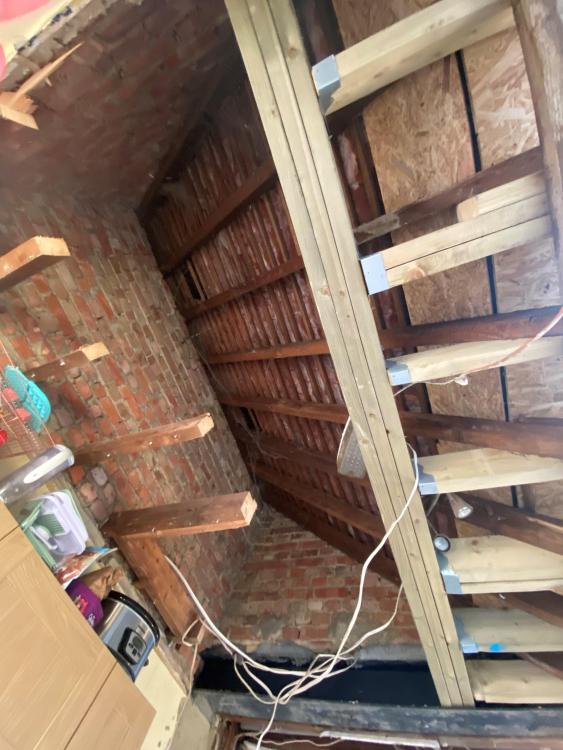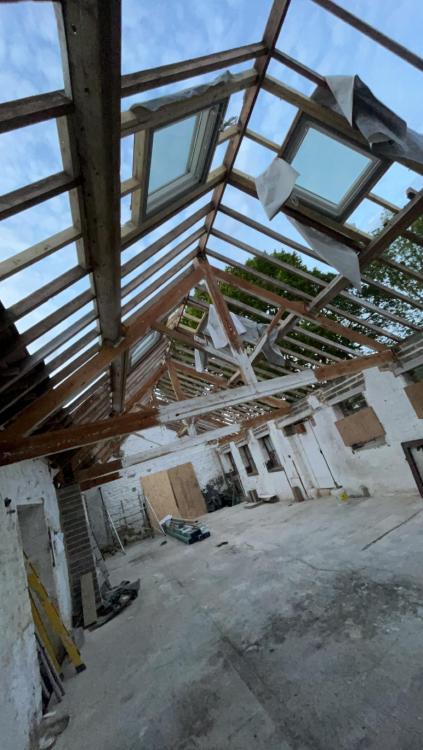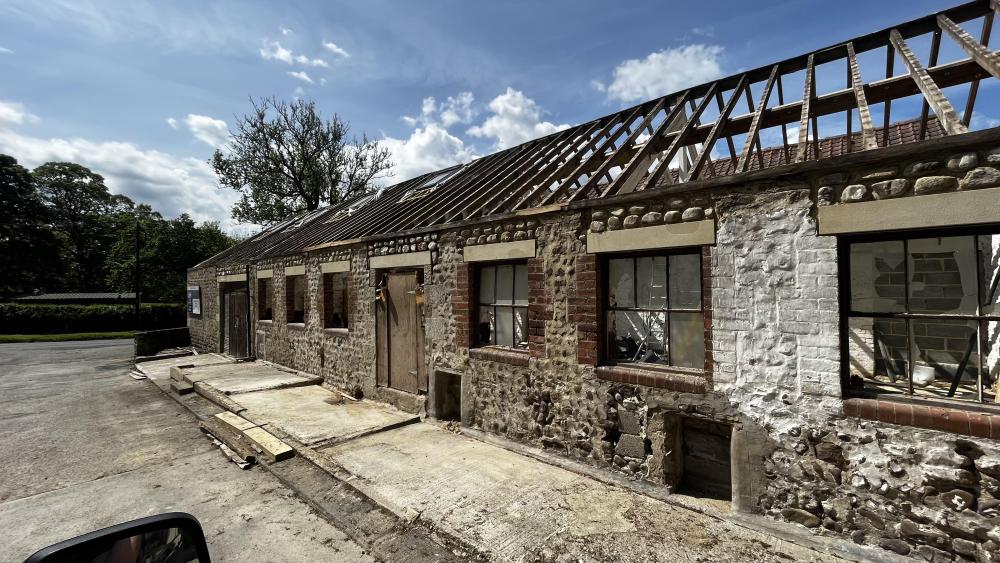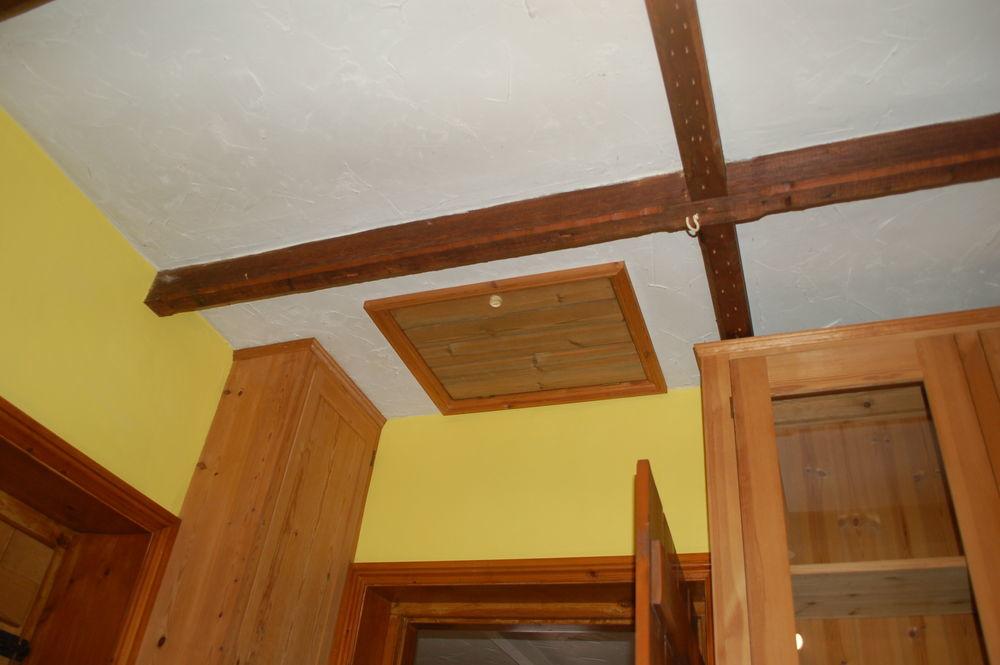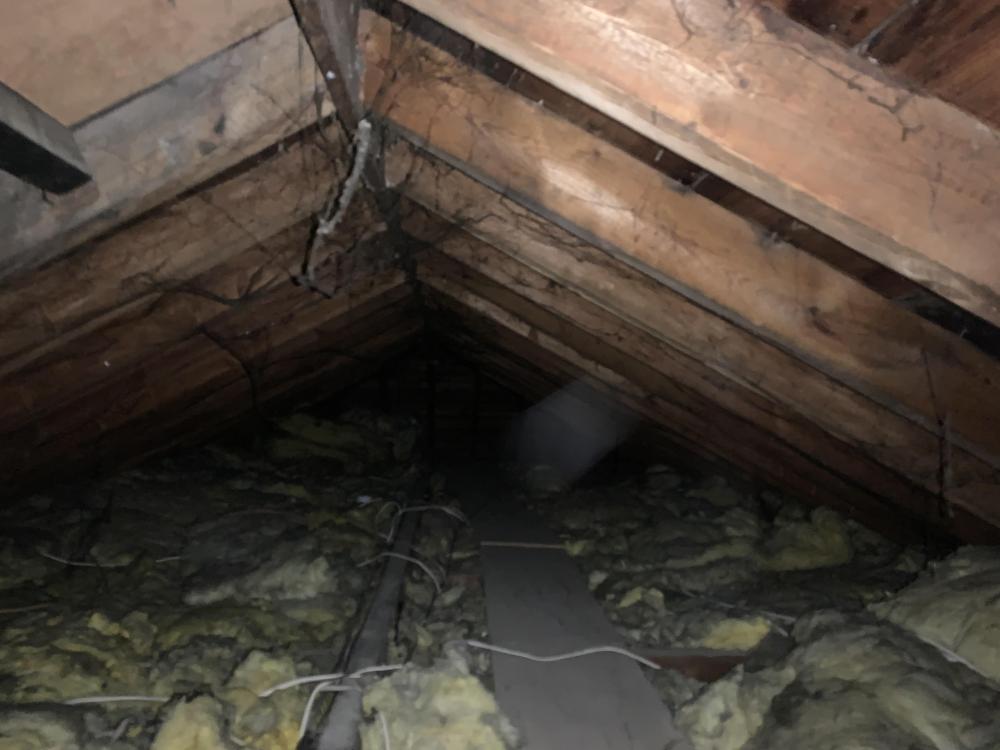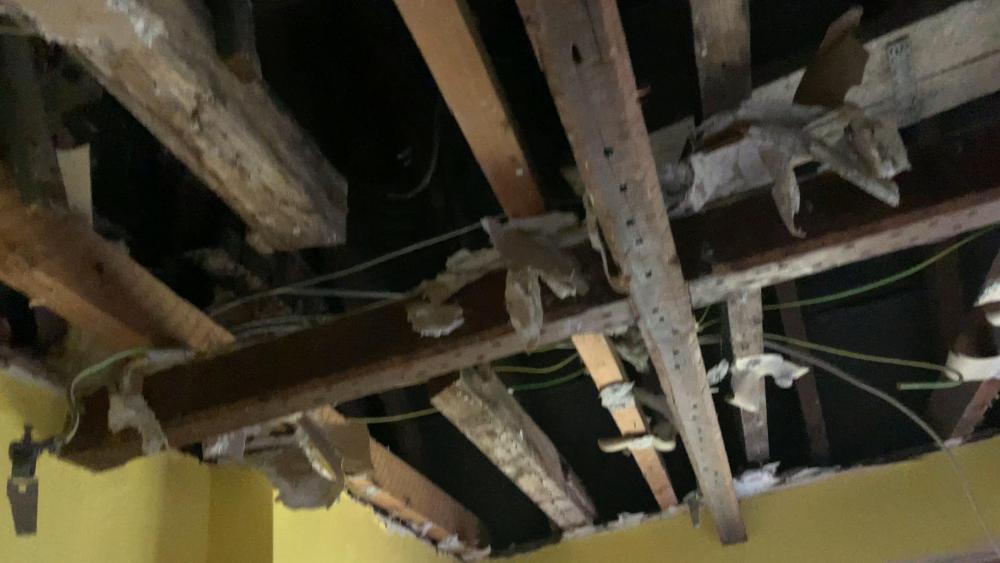Search the Community
Showing results for tags 'vaulted ceiling'.
-
Hello, Looking for some advice with insulating a vaulted ceiling. The rafters are 100mm in thickness, with 2 vented roof tiles at the top. Is it as simple as insulating it with 100mm PIR board and then using insulated plaster board, or are there other layers that need building up, such as a vapour barrier etc? Many Thanks Joe
- 5 replies
-
- vaulted roof
- vaulted ceiling
-
(and 2 more)
Tagged with:
-
Hi all I have started to convert an old barn into a 2 bed bungalow that will have vaulted ceilings through the majority of the building. I’m getting towards the point of needing to insulate the roof. The plans say in put 50x50mm lengths of wood up the existing 100x50mm rafters then insulate between and then overboard with insulated backed plasterboard. It wouldn’t be bad in a new build to do it this way but the old rafters are all slightly off spacing, are twisted and not square. (200 year old building, nothing is square) my idea was to just to screw the 100mm insulation directly to the rafters, maybe add a layer of OSB board below that then insulation backed plasterboard below that. the osb board would be there to provide a fixing point for the plasterboard and light fittings attached to the ceiling. any advice or ideas would be appreciated
- 9 replies
-
- insulate
- vaulted ceiling
-
(and 1 more)
Tagged with:
-
I am in the process of renovating an 18th Century building. Planning to have a vaulted ceiling but to leave the original ceiling joists in place. Below the joists there are what look to be "decorative" joists in place. Would removing these likely cause a structural issue? They were not originally a part of the building fabric. Picture showing joists which I plan to remove or repair/replace Decorative joists before plaster removal Loft space before plaster removal
-
Hi. We have opened the ceiling in our living room which had previously the ceiling in 2.4m height, with a normal plasterboard and 10cm mineral/glass fibre mix. The outside noise was less, but still noticeable. We now want to use the full space of the pitched roof to create a vaulted ceiling. At the moment the rafters have been strengthened and extended to 20cm depth, from which we have left a 5cm void below the felt under the concrete tiles for air ration and added 15 cm celotex insulation. I understand that celotex is great for the heat insulation and that we overreach building specs with the 15 cm, but that it does not do much against outside noise. As we live on a very busy road we wonder what would be the best way to insulate now the roof sound wise the best / economical way? Our builder wants to put additional 2cm wooden batons now under the rafters to account for uneven areas, not filled with anything and attach the sound plasterboard to them? Will this work, or just create an sound problem? Currently I am looking into two different thickness sized acoustic boards, depending on what is available on the market currently. I read about mass loaded vinyl which is quite expensive, and which seems to be often recommended to add in-between the 2 soundboard plasterboards. And in addition I read about resilient bars, where I wonder if they are ok with the weight of two heavy soundboards, and in addition if they are actually helpful against street noise, as this is rather an airborne noise instead of ground-born, , or am I wrong? Or are they rather for ceilings where a room is used above, and so not what I need? What would you recommend to keep out the road noise please? Kind regards Manfred
- 14 replies
-
- sound
- sound insulation
- (and 5 more)
-
The builder is taking a rest... I've lost trust and am checking everything as it's all down to me now.. The rafters are 200mm. The original spec of the vaulted being was 200mm of sheeps wool, BUT we had to then change to F1 bituminous roofing membrane, non breathable, because of the bats and so was encouraged to change to PIR 150mm and a 50mm gap. Fair enough. However, I need to understand the detailing. On the SE diagram the steels are outside the thermal envelope, except for the one resting on the internal wall. (NB the vaulted ceiling will be the whole area, the diagram is slightly wrong as the design was amended, it seems to me that the vertical steel could go in or out of the thermal envelope). See photo: the steel is bolted to the wooden ‘beam’ of the roof ridge. This means non breathable membrane stops at the top there, so the gap is not contiguous with the ventilation things in the ridge tile. Unless I’m missing something, there’s an 50mm air gap but no actual air circulation. There’s nowhere for the air to be drawn in at the top. Surely non breathable membrane and 'plastic' insulation are a potential problem, even if there is a vapour barrier in the plaster board? I feel it needs air to be drawn over it somehow and not being able to inspect it bothers me. Do I need to change tack and think of a breathable house as its a conversion with all the associated compromises? Steel detail.pdf Steel in situ.pdf
- 35 replies
-
- vaulted ceiling
- ventilation
-
(and 2 more)
Tagged with:
-
Hi All I have an interesting design challenge with smoke alarm locations. My plan is to install as follows: Hallway - (Optical) Landing - (Ionising) Kitchen - (Heat) Now the room that poses the problem is the landing as it's much bigger and higher than normal (the landing is actually a large upper drawing room). Firstly I'm going to have to fit two alarms (one at each end) as one centrally just about fails the 3m from bedroom requirement. Secondly it's a vaulted ceiling. I do have a flat area at the top but it's close to 4m high. I can fit them on the slope but the regs state that they have to be 600mm from the apex so I'm not gaining much. So testing these two alarms is going to be a challenge. They'll be interlinked so of course I can hit the test on the ones in the hall/kitchen will will confirm the audible function of these high up alarms. But to test them individually the best I can come up with is a bean pole!! You can get remote switches for testing/silencing but they seem to all rely on radio linked alarms which add considerably to the cost. Again though all they do is test all alarms at once. So, is the action of hitting the test button on one alarm and the others giving an audible result still a genuine test? Or does pressing the test button on each provide a more thorough test. I've read the manuals for most of the major brands and all say to test each alarm individually. Am am I missing any other solution? TTFN
- 12 replies
-
- smoke alarm
- vaulted ceiling
-
(and 1 more)
Tagged with:

